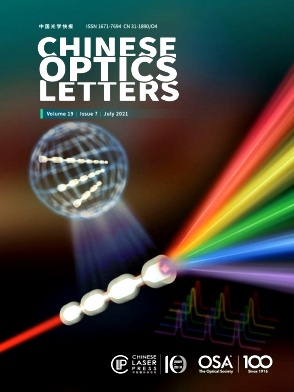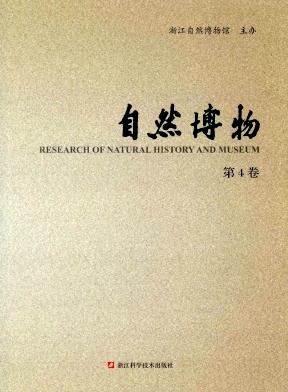Chinese Optics Letters雜志是國(guó)家新聞出版署第一批、第二批學(xué)術(shù)期刊嗎?
來(lái)源:投稿網(wǎng) 2025-02-05 8:30:15
第一批、第二批學(xué)術(shù)期刊相關(guān)問(wèn)題
問(wèn):第一批和第二批一共有多少本期刊?
國(guó)家新聞出版署認(rèn)定的第一批學(xué)術(shù)期刊共5737本、第二批共693本。
問(wèn):第一批學(xué)術(shù)期刊和第二批學(xué)術(shù)期刊哪個(gè)好?
沒(méi)有誰(shuí)比較好的差別,就只是申報(bào)評(píng)定的時(shí)間的前后一樣,第二批學(xué)術(shù)期刊的評(píng)定時(shí)間要晚一些。
問(wèn):第一批和第二批學(xué)術(shù)期刊是核心還是普刊?
有普刊也有核心,也有根本不對(duì)外征稿甚至連任何一個(gè)數(shù)據(jù)庫(kù)都不上的期刊。
問(wèn):第一批和第二批學(xué)術(shù)期刊目錄在哪里看?
本站提供第一批和第二批學(xué)術(shù)期刊目錄下載查詢: 國(guó)家新聞出版總署第一批學(xué)術(shù)期刊目錄 國(guó)家新聞出版總署第二批學(xué)術(shù)期刊目錄
Chinese Optics Letters投稿要求
Chinese Optics Letters雜志投稿須知:
1、 TitleThe title should be concise but informative. Avoid beginning with an article or a preposition. The words "new" or "novel" should be avoided in the title and the text for legal reasons. Titles may be edited by the publisher to facilitate computer search.。
2、 Author names and AffiliationsAuthor names should be given in full and consistent form to facilitate indexing. Affiliations and postal addresses for all authors should appear on the title page.。
3、 AbstractThe abstract should be no longer than 100 words. It should be informative, without descriptive words or citations, and contain the major conclusions and quantitative results or other significant items in the paper. Together with the title, the abstract must be adequate as an index to all the subjects treated in the paper, and will be used as a base for indexing.。
4、 OCIS CodesOCIS codes should be provided to help with indexing. This set of codes was formulated by the Optical Society of America and well-known in the optical research world. OCIS codes are available on Chinese Optics Letters’ web page and the OSA publication web pages. Each manuscript must be given 2-4 OCIS codes below the abstract, and the principal index code should be placed first.。
5、 EquationsEquations should be punctuated and aligned to bring out their structure, and numbered consecutively in round brackets on the right-hand side of the page.Notation. Notation must be legible, clear, compact, and consistent with standard usage. In general, acronyms should be defined at first use. Variables and Vectors. Set single-letter variables in italics (Eg. M). Set vectors in boldface (Eg. m). Functions, derivative "d," abbreviations, and multi-letter identifiers should be set in roman (plain) type (Eg. α, cos, ∫...dx). Fences. For simple bracketing the usual order of parentheses and brackets is { [ ( { [ ( ) ] } ) ] }. Bit and Byte. The standard abbreviations for bit and byte are b and B, respectively. To avoid confusion, these units should be spelled out in most cases (1 bit, 20 GB). Display equations should be broken and aligned for two-column display unless spanning across two columns is essential. Equations should be centered with equation numbers set flush right. For Math Type math, use the Format Equations feature to format all equations as Times + Symbol 10. Note: There must be a blank line space above and below each displayed equation.。
6、 ReferencesReferences should be numbered consecutively in the order in which they are first referenced in the body of the manuscript. Two references [2,3] should be included together, separated by a comma, and three or more consecutive references should be indicated by the bounding numbers and an en dash [1-4]. When compiling your references, be sure to include the titles of articles. COL requires this information before a paper can be sent to peer review. The reference titles will subsequently be removed by copy editors before they are published, so this information is not included in the length estimate sent to authors when a positive decision is made by the editor. All reference authors should be included in the reference list but when reference authors are mentioned in the text, use surnames only (unless further clarity is needed), and use "et al." and first author name when three or more authors are given. The format of references is as follows:Journal paper1、 Q. Ji, X. Ma, J. Sun, H. Zhang, and Y. Yao, "Novel method for measurement of effective cavity length of DBR fiber", Chin. Opt. Lett. 8, 398 (2010).Book2、 N. Bloembergen, Nonlinear Optics (Springer, 1965).Paper in published conference proceedings3、 R. E. Kalman, "Algebraic aspects of the generalized inverse of a rectangular matrix", in Proceedings of Advanced Seminar on Generalized Inverse and Applications 111 (1976).SPIE proceedings4、 S. K. Griebel, M. Richardson, K. E. Devenport, and H. S. Hinton, "Experimental performance of an ATM-based buffered hyperplane CMOSSEED smart pixel array", Proc. SPIE 3005, 254 (1997).Paper accepted for publication5、 H. Qi, M. Zhu, W. Zhang, K. Yi, H. He, and J. Shao, “Dependence of wavefront errors on the nonuniformity of thin film", Chin. Opt. Lett. (to be published).Internet links6、 A. G. Ramm, H. Wang, and J. Ye, "Invisible obstacles", http://www.arxiv.org/abs/math-ph/0608034 (June 1, 2011).Patent。
7、 K. Zhang, J. Zhang, R. Wang, R. Guo, J. Wang, and K. Peng, “All solid state single frequency and frequency-doubled laser” (in Chinese) Chinese Patent ZL98125474、8 (2000).7、 Figures and TablesFigures should be suitable (resolution above 300 dpi) for immediate reproduction and embedded in the text. They should be set as one column wide (6-8 cm) if possible unless two-column display is essential. In the figures, the main lines should be about 0.3 mm in width, and the assistant lines 0.15 mm. Notations in the figures should be distinct and consistent with the same ones in the text, and their font size will be 7-9 pt. Figures should also be uploaded as separate figure files. Each figure should have its own caption. Color Art is Online Only, and free to authors.Tables must be numbered in order of appearance and identified with appropriate titles. The table title, which should be brief, goes above the table. Note that tables are usually typeset, not scanned (tables cannot be electronically reduced in size). Tables should be set in one column wide if possible and be placed near their first mention in the body.。
8、 Article Length and ProofNote that Chinese Optics Letters has a limit of five printed pages. If a paper exceeds this limit, it must be shortened before the paper is accepted. If the page proof is over the five-page limit, the proof must be shortened before the paper can be assigned to a final issue. Authors should use the COL Word or LaTeX templates to prepare manuscripts to facilitate length checking.
 點(diǎn)擊前往雜志首頁(yè)
點(diǎn)擊前往雜志首頁(yè)
Chinese Optics Letters相關(guān)問(wèn)題
- Chinese Optics Letters是正規(guī)期刊嗎?
- Chinese Optics Letters是什么級(jí)別的期刊?
- Chinese Optics Letters是北大核心嗎?
- Chinese Optics Letters是科技核心嗎?
- Chinese Optics Letters是統(tǒng)計(jì)源核心嗎?
- Chinese Optics Letters是南大核心CSSCI嗎?
- Chinese Optics Letters是CSCD期刊嗎?
- Chinese Optics Letters是國(guó)家級(jí)期刊嗎?
- Chinese Optics Letters是SCD期刊嗎?

刊.jpg)
博物館研究.jpg)
新時(shí)代.jpg)
.jpg)
.jpg)
于我們.jpeg)